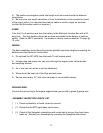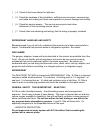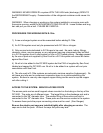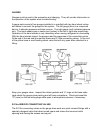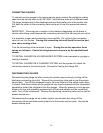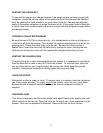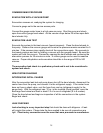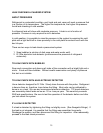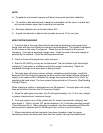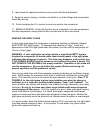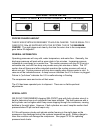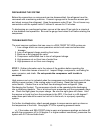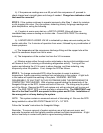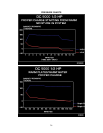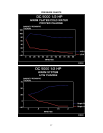30
NOTE:
Propellants and solvents (sprays and foams) may upset electronic detectors.
To confirm a leak detected with a detector use bubbles and be sure it is a leak and
not some erroneous vapor that is upsetting the machine.
Electronic detectors do not function below 40.F.
A good leak detector is able to pick up leaks as low as 1/2 oz. per year.
NEW SYSTEM CHARGING
1. Continue after a thorough leak check by opening the discharge (red) gauge hand
wheel valve with the can inverted to introduce more refrigerant. The system is designed
for 24 ounces or two cans of refrigerant. Shake the can to determine the amount
remaining. If one can is accepted change cans. Install as much of the total charge as
possible by this method. Close the discharge hand wheel.
2. Check to be sure the proper sea cocks are open.
3. Start the DC 5000 by turning on the thermostat. The red indicator light should light,
indicating 12-volt power is available and that the system is operating. Check the
overboard discharge to be sure water is being pumped.
4. The sight glass will show a stream of foam, indicating a partial charge. Install the
balance of the total charge by opening the blue suction hand wheel with the refrigerant
supply in the vapor position. Maintain the charge feed pressure below 20 to 25 psi. by
regulating the hand wheel. The new system charge should be 24 ounces. (See Reading
the Sight Glass)
When charging a system in temperatures over 80 degrees F. the sight glass will usually
clear as the return line from the V/U becomes frosted.
5. When the sight glass runs clear, top off with approximately 4 oz. (1/4 of can), subject
to proper charge amount: maximum charge.
6. On a new system, turn off the compressor for several minutes after charging, and
then restart it. Allow 2 minute "off" periods between 2 to 15 minutes operating periods).
This distributes the oil. When charging is complete, stop the compressor and allow the
entire system to equalize and for the fittings to dry, an hour in most conditions.
7. When observation and test operation have been complete, close the gauge
connecting valves and disconnect them from the system. Re-cap the access ports.



